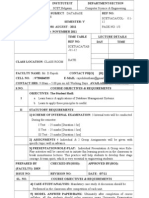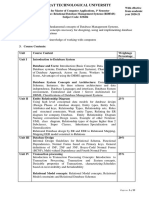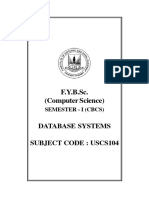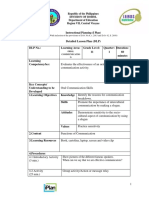0% found this document useful (0 votes)
13 views5 pagesDBMS Assignment With Answer Space
The document is an assignment on Database Management Systems (DBMS) covering various topics such as definitions, advantages, data models, ER diagrams, relational models, SQL, functional dependency, normalization, and transaction management. It includes questions that require explanations, examples, and practical applications related to DBMS concepts. The assignment is structured into six units, each focusing on different aspects of DBMS.
Uploaded by
rinkikuma840Copyright
© © All Rights Reserved
We take content rights seriously. If you suspect this is your content, claim it here.
Available Formats
Download as PDF, TXT or read online on Scribd
0% found this document useful (0 votes)
13 views5 pagesDBMS Assignment With Answer Space
The document is an assignment on Database Management Systems (DBMS) covering various topics such as definitions, advantages, data models, ER diagrams, relational models, SQL, functional dependency, normalization, and transaction management. It includes questions that require explanations, examples, and practical applications related to DBMS concepts. The assignment is structured into six units, each focusing on different aspects of DBMS.
Uploaded by
rinkikuma840Copyright
© © All Rights Reserved
We take content rights seriously. If you suspect this is your content, claim it here.
Available Formats
Download as PDF, TXT or read online on Scribd
/ 5






















































































